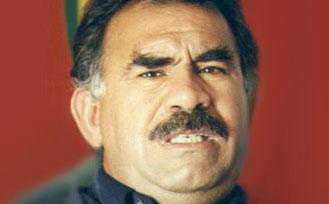STRATFOR
—————————
October 19, 2011

IN TURKEY, ATTACKS SHOW PKK STILL A REGIONAL FORCE
Summary
On Oct. 19, the Kurdish militant group Kurdistan Workers’ Party (PKK) conducted eight attacks against Turkish security forces simultaneously, marking the deadliest attack the group has ever conducted as well as a significant shift in its tactics. Many regional actors, including Iran, Iraq and Turkey, are devising new security arrangements for when the United States withdraws its forces from Iraq. The PKK attacks show that the militant group is a force with which these actors must contend.
Analysis
The Kurdistan Workers’ Party (PKK), a Kurdish militant group in Turkey, attacked eight different police and military installations Oct. 19 in Cukurca and Yuksekova, two districts in Hakkari province, Turkey, between 1 a.m. and 5 a.m. An attack on Keklikkaya border post alone killed 21 Turkish soldiers. Initial reports suggest that between 100-200 militants crossed into Turkey from their hideouts in northern Iraq’s Qandil Mountains, and their attempts to return to Iraq are currently ongoing. According to Turkish sources, the attack left 24 Turkish troops dead and at least 18 injured, while the Turkish army’s counteroffensive allegedly has left some 23 PKK militants dead so far. The attack comes one day after a PKK attack against security forces in the southeastern city of Bitlis left five police officers and a child dead.
The events of Oct. 19 are the most lethal Turkey has seen since the PKK began its armed struggle against the country in 1984. The group clearly still has the ability to inflict heavy damage to the Turkish military despite the recent increase in airstrikes along the Turkey-Iraq border, dispelling rumors among the Turkish media and government that the group is dissolving under Ankara’s new strategy against it. Regional circumstances, specifically the planned U.S. withdrawal from Iraq and the subsequent security arrangement among Turkey, Iran and Iraq, likely precipitated the attacks, prompting the PKK to deviate from its normal tactics by conducting a larger and multifaceted attack.
Indeed, the tactics used in the attack mark a significant shift in the PKK’s militant activity; rather than target a single military base, militants attacked several targets simultaneously. Turkish media report that the other border posts were attacked at the same time to prevent reinforcements from coming to Keklikkaya. Staging simultaneous attacks allowed the PKK to cut off security forces’ lines of support between targets and also served to create confusion, making rapid response to a single area under attack much more difficult. The Turkish military eventually responded by deploying commandos, helicopters and fighter jets over Iraqi soil as PKK militants returned there. Special operations personnel reportedly have taken positions at various points 7-8 kilometers (4.3-5 miles) into Iraqi territory to trap militants as they return to their hideouts, and an additional 500 soldiers have been deployed to assist in their efforts.
The Oct. 19 attacks come at a time when conditions in the region are changing. As the official deadline of U.S. troop withdrawal from Iraq approaches, it remains unclear how many — if any — U.S. troops will remain in Iraq. Meanwhile, all regional actors are watching for signs of increasing instability in northern Iraq. After several weeks of heavy Iranian bombardment against the Party of Free Life of Kurdistan (PJAK), the PKK’s Iranian arm, along the Iraq-Iran border — primarily a message from Iran to the Kurdish Regional Government (KRG) about the risks of hosting U.S. troops after the withdrawal — the KRG reportedly reached a deal with Iran about PJAK’s status. According to this deal, PJAK will empty its bases near the Iranian border and KRG peshmerga will maintain security on the Iraqi side of the border. Though this is not an ideal situation for the PKK and PJAK, the militant groups seem to have agreed to the deal, possibly with the intent of driving a wedge between a potential Turkish-Iranian front against them. From the Kurdish perspective, this front formed when the two countries simultaneously attacked the PKK’s hideouts in August.
Wary of the KRG’s plans to increase its military presence in the north, Iraqi Prime Minister Nouri al-Maliki has introduced the idea of sending Iraqi troops to the northern region essentially to prevent the PKK from launching attacks on Turkey. Turkish Foreign Minister Ahmet Davutoglu welcomed the idea during Iraqi Foreign Minister Hoshyar Zebari’s visit on Oct. 12, saying Turkey “would not need to conduct operations in northern Iraq if there is no threat emanating from there.” The PKK did not respond well to this apparent understanding between Ankara and Baghdad, which it saw as a counterbalance the deal between Tehran and the KRG. The Oct. 19 attack is part of the PKK’s response, one intended to claim the group is still a force to reckon with in the region.
Whether the PKK will conduct similar attacks in the near future remains to be seen. It has so far not been able to maintain militant activity on this scale for extended periods of time. The Turkish government, on the other hand, has not indicated that it will conduct a large scale land-based military incursion in northern Iraq, which would further increase the number of troop casualties. (Small-scale cross-border operations take place frequently, as do airstrikes.)
The Turkish government and the PKK and other Kurdish political forces want to test the limits of the other side and gain the upper hand in the lead up to redrafting sessions of the new Turkish constitution. It is no coincidence that such a major attack took place on the same day of the first meeting of the parliamentary committee tasked with negotiations to that end.
Copyright 2011 STRATFOR.